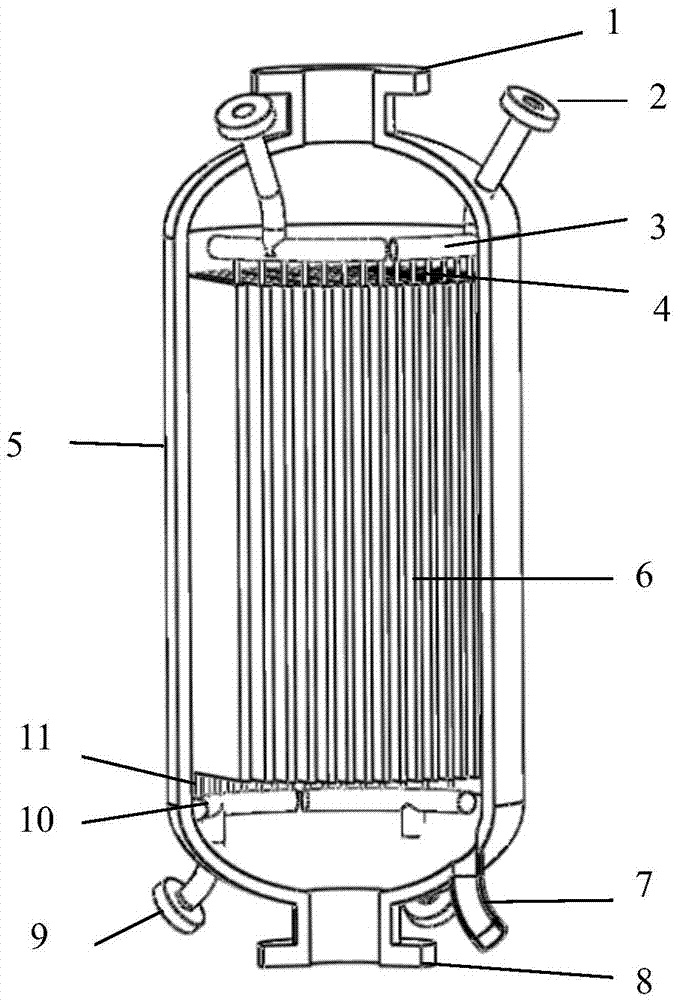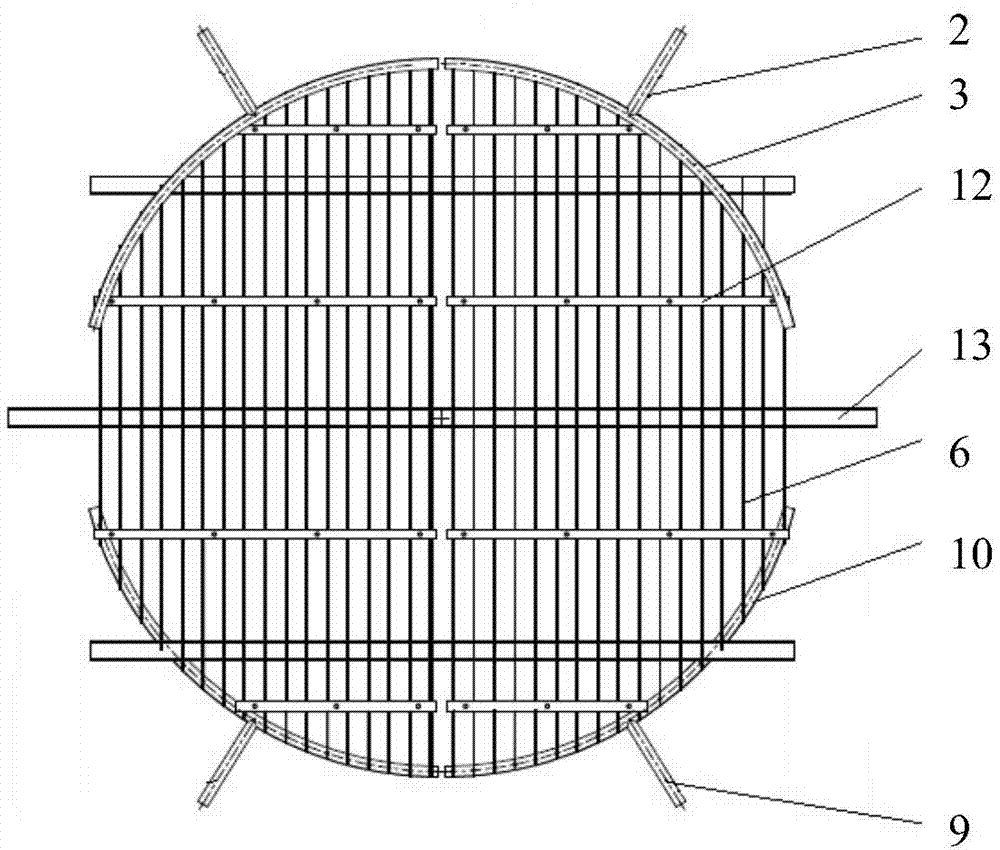Novel hydrogenation reactor for synthesis gas-to-ethylene glycol process
A hydrogenation reactor and reactor technology, applied in the preparation of hydroxyl compounds, organic compounds, chemical instruments and methods, etc., can solve the problem of increased overall thermal resistance of plates and plate fins, inconvenient loading and unloading of catalysts, and decreased reaction conversion rates and other problems, to achieve the effect of large-scale equipment, stable and reliable product properties, and gentle distribution of reaction temperature
- Summary
- Abstract
- Description
- Claims
- Application Information
AI Technical Summary
Problems solved by technology
Method used
Image
Examples
Embodiment 1
[0035] Such as figure 1 As shown, a new hydrogenation reactor for synthesis gas to ethylene glycol process, the reactor includes a reactor shell 5, a pair of heat exchange plates 6, a cooling medium distribution main pipe 10, a cooling medium distribution branch pipe 11, a cooling The medium collection main pipe 3 and the cooling medium collection branch pipe 4; the reactor shell 5 includes a cylinder body, an upper head, a manhole, a lower head, a reaction gas inlet 1, a product gas outlet 8, a cooling medium inlet 9, a cooling medium Outlet 2 and catalyst discharge port 7.
[0036] Such as figure 2 As shown, the bottom of the reactor shell 5 is provided with a cooling medium inlet 9, and the top is provided with a cooling medium outlet 2, and the heat exchange plate pair bundle 6 is composed of a plurality of heat exchange plate pairs arranged in parallel and at equal intervals. Catalysts are filled between adjacent heat exchange plate pairs, and the spacing between plate...
PUM
 Login to View More
Login to View More Abstract
Description
Claims
Application Information
 Login to View More
Login to View More - R&D
- Intellectual Property
- Life Sciences
- Materials
- Tech Scout
- Unparalleled Data Quality
- Higher Quality Content
- 60% Fewer Hallucinations
Browse by: Latest US Patents, China's latest patents, Technical Efficacy Thesaurus, Application Domain, Technology Topic, Popular Technical Reports.
© 2025 PatSnap. All rights reserved.Legal|Privacy policy|Modern Slavery Act Transparency Statement|Sitemap|About US| Contact US: help@patsnap.com


